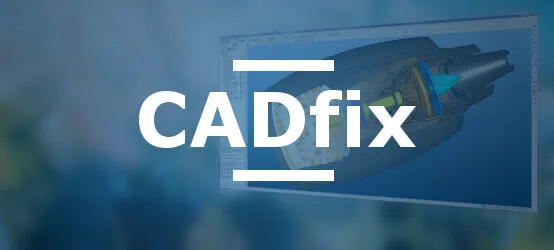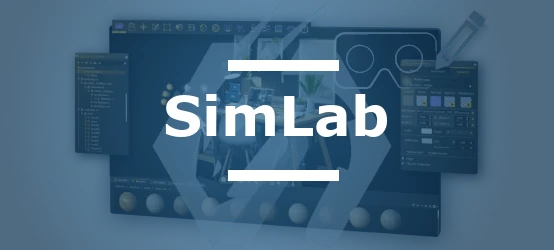Table of Contents
- Fundamentals and Technical Characteristics of STL Format
- Interoperability Challenges and Limitations of STL Format
- Export Parameters and Best Practices for Quality STL Files
- Software Solutions for STL File Manipulation and Conversion
- Industrial Applications and Case Studies of STL Format
- Conclusion: Maximizing the Value of STL Format in Your Engineering Processes
The STL (STereoLithography) format remains one of the most widely used standards for 3D data exchange in the manufacturing industry. Its simplicity and universal compatibility make it a pillar of CAD interoperability, but also pose significant technical challenges for engineers and designers. In an industrial environment where digital collaboration is essential, understanding the nuances of this format and mastering the tools to manipulate it effectively becomes a decisive competitive advantage.
Fundamentals and Technical Characteristics of STL Format
The STL format, initially developed by 3D Systems in 1987, constitutes a simplified but effective representation of 3D geometries. Its name derives from "STereoLithography," referring to the first 3D printing technology for which it was designed.
Fundamental Technical Structure
The particularity of the STL format lies in its method of representing surfaces by tessellation:
- Structure based exclusively on juxtaposed triangles (facets)
- Each triangle defined by three vertices with Cartesian coordinates (x,y,z)
- Normal vector associated with each facet indicating its orientation
- Absence of any information on colors, textures, or materials
- Simplified topological organization without explicit relationship between adjacent triangles
The format exists in two main variants: ASCII and binary. The ASCII version, although human-readable, generates significantly larger files than its binary equivalent, the latter being preferred for industrial applications.
Positioning Among Mesh Formats
| Format | Characteristics | Advantages vs STL | Limitations vs STL |
|---|---|---|---|
| STL | Simple triangles | Universal standard | No color/texture |
| OBJ | Polygons, textures | Texture support | Increased complexity |
| PLY | Properties per vertex | Custom attributes | Less universal |
| 3MF | Modern format | Colors, materials, structures | Limited adoption still |
| STEP | Exact B-rep | Precise geometry | Complex conversion |
The STL format is distinguished by its mathematical simplicity, which facilitates data translation operations between heterogeneous systems while preserving the geometric essence of 3D models necessary for rapid prototyping and manufacturing.
Interoperability Challenges and Limitations of STL Format
CAD interoperability relies on the ability of exchange formats to maintain data integrity across different systems. The STL format, despite its popularity, presents several fundamental challenges that affect this capability.
Inherent Structural Limitations
The STL format suffers from technical constraints that complicate its use in advanced multi-CAD environments:
- Absence of scale and unit information, requiring external conventions
- Complete loss of model structure (features, design history)
- Absence of PMI (Product Manufacturing Information) crucial for manufacturing
- Approximate representation of curved surfaces, dependent on mesh fineness
- Inability to represent complex solids with internal features without specific adaptations
Exchange Issues in Multi-CAD Environments
In modern digital chains, these limitations lead to practical complications:
- Scale interpretation problems between different CAD systems during import
- Difficult or impossible modification of imported models without reconstruction
- Loss of design semantics and parametric functionalities
- Risk of geometric errors during multiple conversions ("telephone game" effect)
- Disruption in the continuity of metadata essential to product traceability
Impact on PLM Integration and Long-Term Archiving
The intrinsic simplification of the STL format creates obstacles for modern PLM systems:
- Difficulty maintaining links between product versions and variants
- Incomplete archiving preserving only approximate geometry
- Contextual information losses compromising future model reuse
- Limitations in workflow automation requiring semantic information
- Increased complexity in data quality validation for critical processes
These challenges require organizations to develop specific STL data management strategies to maintain information integrity throughout the product lifecycle.
Export Parameters and Best Practices for Quality STL Files
The quality of an STL file essentially depends on the parameters used when exporting it from a native CAD system. Judicious choices allow for an optimal balance between geometric precision and file size.
Critical Conversion Parameters
Two fundamental parameters determine the quality of the STL mesh:
- Chordal tolerance (resolution or deviation): Defines the maximum allowed deviation between the exact surface and its triangulated representation
- Angular tolerance: Controls the maximum angle between normals of adjacent facets
These parameters directly influence:
- The geometric fidelity of the model compared to the original
- The number of triangles generated and thus the file size
- Processing time for subsequent operations
- Compatibility with downstream processes (3D printing, machining, etc.)
Recommendations by Application
| Application | Chordal Tolerance | Angular Tolerance | Specific Considerations |
|---|---|---|---|
| Visualization | 0.1-0.5 mm | 10-15° | Prioritize file lightness |
| Standard 3D Printing | 0.05-0.1 mm | 5-10° | Balance precision/weight |
| Precision Manufacturing | 0.01-0.03 mm | 1-5° | High fidelity required |
| Finite Element Analysis | 0.1-0.3 mm | 10-15° | Adaptation to critical areas |
| Virtual Reality | 0.2-0.5 mm | 10-20° | Optimization for performance |
Validation and Correction Workflow
A robust STL file validation process includes:
- Verification of correct orientation of face normals
- Detection of degenerated triangles (null or near-null surface)
- Identification of holes or discontinuities in the mesh
- Control of triangle intersections and overlaps
- Analysis of mesh density relative to precision requirements
Adopting these best practices helps anticipate and resolve interoperability issues before they impact the digital value chain, thus ensuring smooth technical data exchanges between partners.
Software Solutions for STL File Manipulation and Conversion
Facing the interoperability challenges of the STL format, specialized software solutions optimize the management, visualization, and conversion of data. CAD Interop offers a complete portfolio of professional tools addressing these specific needs.
3DViewStation: Advanced Visualization and Analysis
3DViewStation offers a powerful solution for leveraging STL files in a business context:
- High-performance visualization of large STL models with automatic optimization
- Comprehensive geometric analyses: measurements, sections, model comparison
- Generation of sections for internal structure analysis
- Bidirectional conversion between STL and standardized exchange formats (STEP, JT, 3D PDF)
- Creation of technical documentation integrating 3D views of the STL model
This solution integrates perfectly into multi-CAD workflows by enabling rapid visual validation of STL models before their use in production.
CADfix: Mesh Repair and Optimization
For STL models with geometric imperfections, CADfix offers advanced healing functionalities:
- Automated detection and correction of mesh errors
- Repair of non-watertight meshes essential for 3D printing
- Intelligent simplification reducing the number of triangles while preserving important details
- Optimization of triangle quality to improve analysis accuracy
- Reconstruction of precise surfaces (B-rep) from STL meshes
CADfix distinguishes itself by its ability to transform problematic STL data into quality models, allowing their reintegration into demanding engineering processes.
SimLab: Immersive Experiences from STL Models
SimLab transposes STL data into the dimension of virtual and augmented reality:
- Creation of interactive 3D environments from existing STL models
- Transformation of raw meshes into immersive visualizations
- Automatic optimization of models for mobile and web applications
- Integration of metadata and annotations on STL models
- Real-time collaboration around models in a virtual environment
This innovative solution extends the use of STL data beyond the traditional technical domain, allowing marketing, training, and customer support teams to benefit from existing 3D models.
Integration into PLM Ecosystems
CAD Interop solutions integrate harmoniously into existing PLM environments:
- Standardized connectors for major market PLM platforms
- Management of metadata associated with STL files
- Automation of validation and conversion processes via API
- Complete traceability of operations performed on STL files
- Support for long-term archiving with quality validation
This global approach allows overcoming the intrinsic limitations of the STL format while capitalizing on its simplicity and universality in technical data exchanges.
Industrial Applications and Case Studies of STL Format
The STL format, despite its constraints, finds diverse applications in modern industry. Its judicious use, associated with appropriate tools, allows effectively solving specific CAD interoperability problems.
Additive Manufacturing and Rapid Prototyping
The historical application domain of STL remains additive manufacturing:
- Standardized transfer of geometries to 3D printers from all manufacturers
- Universal support by print preparation software (slicer)
- Simplification of prototyping iterations via rapid exchanges
- Archiving of produced parts for on-demand manufacturing
- Prior validation of models before series production
A European automotive supplier recently optimized its development process using 3DViewStation to validate and convert more than 5000 STL files monthly, reducing preparation time before printing by 40%.
Reverse Engineering and Retrofitting
The STL format often constitutes the first link in reverse engineering processes:
- Capture of existing geometries via 3D scanning exported in STL
- Processing of raw data to extract essential characteristics
- Reconstruction of parametric models from STL meshes
- Comparison between manufactured parts and theoretical models
- Documentation of heritage parts for digital conservation
How to Effectively Integrate STL Data into Collaborative Engineering Workflows?
Successful integration of STL data into modern collaborative environments relies on:
- Establishment of clear exchange conventions (units, orientation, detail levels)
- Implementation of automated validation processes before integration
- Use of tools like CADfix for data preparation and optimization
- Enrichment of STL models with contextual metadata
- Application of simplification strategies adapted to specific use cases
Numerical Simulation and Analysis
The STL format also serves as an interface in simulation processes:
- Preparation of simplified geometries for finite element analysis
- Conversion between exact CAD models and discretized representations
- Topological optimization generating lightweight structures exported in STL
- Aerodynamic validation of complex shapes
- Comparative analysis of successive versions of the same product
An aeronautical design office implemented a digital chain based on SimLab to visualize structural analysis results on STL models in virtual reality, significantly improving communication between technical teams and decision-makers.
Conclusion: Maximizing the Value of STL Format in Your Engineering Processes
CAD interoperability of the STL format remains a strategic issue for companies seeking to optimize their digital chains. While its simplicity constitutes both its strength and weakness, modern solutions allow transcending its intrinsic limitations.
The combination of specialized tools offered by CAD Interop - 3DViewStation for visualization and analysis, CADfix for repair and optimization, and SimLab for immersive experiences - offers a comprehensive approach to fully exploit the potential of STL data in demanding industrial environments.
To succeed in your STL-based interoperability strategy, we recommend:
- Adopting rigorously defined export standards from model creation
- Implementing systematic validation processes ensuring data quality
- Using software solutions adapted to each stage of the product lifecycle
- Training teams in best practices specific to STL file management
- Anticipating interoperability needs from the design of technical workflows
By mastering these essential aspects, your organization can transform a simple geometric representation into a true digital asset, thus ensuring the continuity and efficiency of your engineering processes in an increasingly complex multi-CAD environment.




